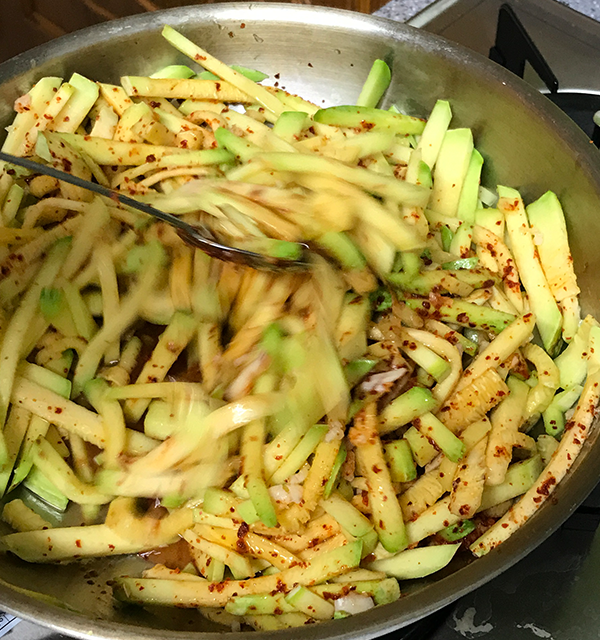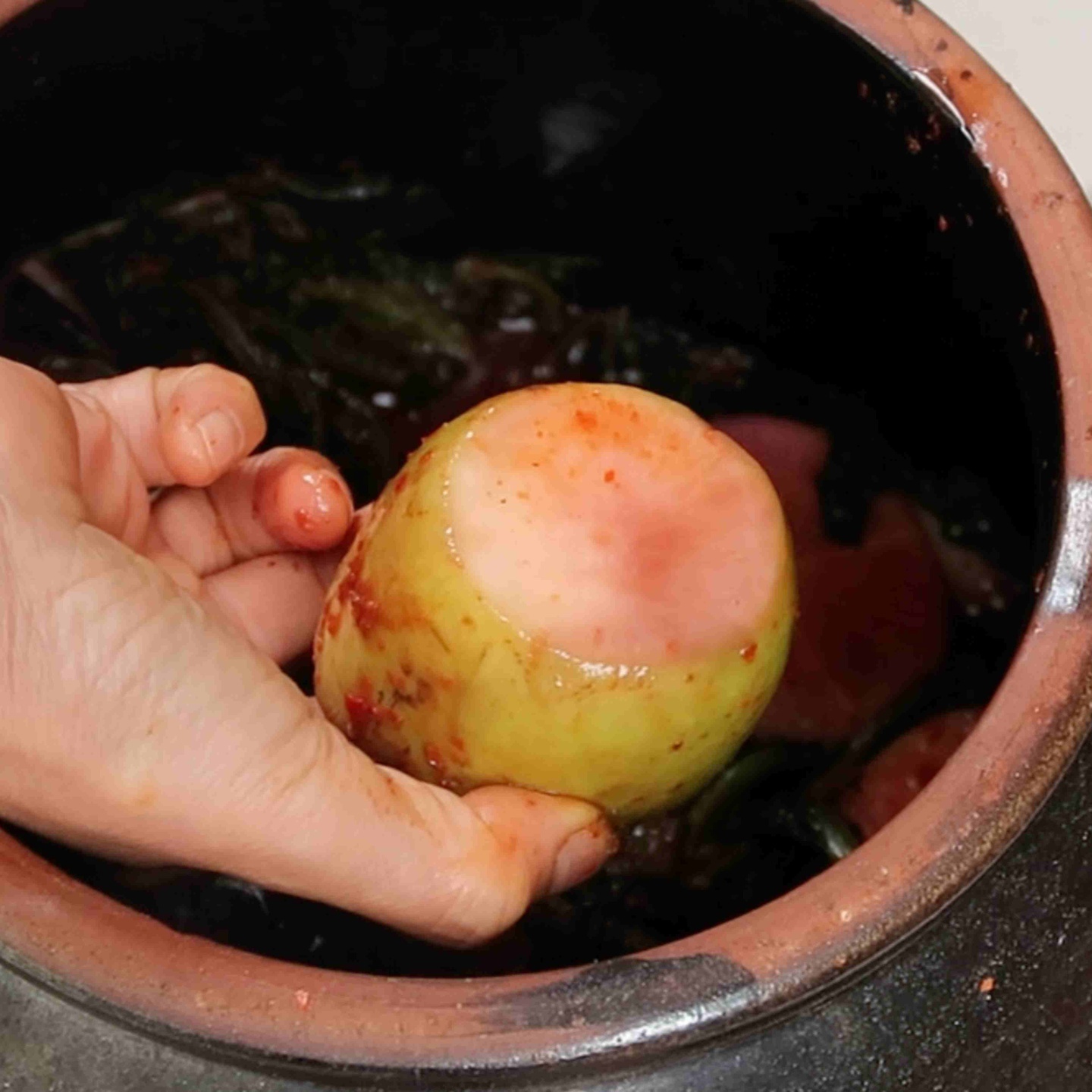How to Plate Namul Side Dishes
Let’s first begin at the seasoning stage. You season ingredients already when making stir-fried Namul. But when you make Saengchae (생채) or Sukchae (숙채), you need to add the seasoning by hand. When seasoning, tougher vegetables like balloon flower root (도라지). You can slightly massage the sauce into the root so that it is seasoned well. However, leafy or delicate vegetables like eggplant or spinach should be mixed with the seasoning by being gently tossed with the seasoning. While tossing, you can separate the pieces of the vegetables that are clumped together. Do not massage gentle leafy vegetables, or it can damage them, and they will look less appetizing.
Now that your vegetables are seasoned, whether by hand or while stir-frying, you can plate them.
You want to stack the ingredients up high on the plate. This makes it more appetizing looking. You can finish almost any Namul side dish with crushed sesame seeds to add garnish and flavor. Crushed sesame seeds are very important to the flavor of Namul, so adding more on top will just make the dish better.
How to Store Cooked/Prepared Namul
Ideally, you season the ingredients with your sauce when you are about to serve it. If you season the Namul side dish and then place it into a container, then water will be released, and the texture can get soggy and the flavor bland.
But if you want to store some Namul side dishes for the week, here are two ways:
- If you want to make bulk or prep a lot of Namul, then here is a hack. The best way is to prep the ingredients and the sauce but keep them in separate containers until it is time to serve the Namul. For example, steam and tear eggplant and then make the sauce and store it separately until it’s time to mix and eat.
- If you want to prep and store raw ingredients that you want just to grab and then easily cook, so it is even fresher, then make sure to store cut and cleaned ingredients like spring cabbage and eggplant in water with a little lemon to avoid browning. Remember that if you soak something for too long, nutrients are leeched out, so use it sooner than later if stored in water.
If you have some leftover Namul from dinner that is seasoned and you want to store it, just place it into an airtight container in the fridge.
It is not a good idea to try and make bulk Namul and freeze it. Never freeze your seasoned Namul side dishes. Once they are defrosted, they will be completely ruined, and the texture will be terrible.
Basic Namul Storage Timeline:
Storage time depends on the vegetable/ingredient used to make that Namul dish. Some seasoned Namul goes bad faster (mung bean sprouts) than other kinds. Therefore, check your Namul dish after 2-3 days to see if it’s still good. Make sure all Namul is eaten at most within 1 week of making.


